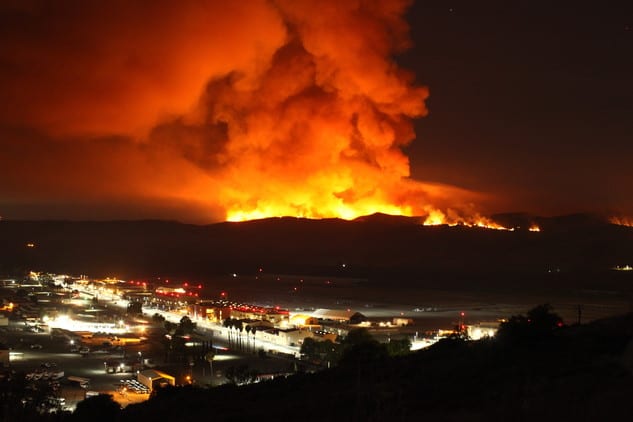MARINE CORPS BASE CAMP PENDLETON, Calif. —
As summer approaches, so does the dry season for Southern California. Most notably, with the dry season comes wildland fires. Marine Corps Base Camp Pendleton is in the middle of Southern California- one of the areas most affected by wildland fires- and continues to prepare for the upcoming fire season.
Wildland fires on Camp Pendleton burn an average of 15-hundred acres annually; the damage caused to the environment because of uncontrolled fires causes an imbalance in the ecosystem and infrastructure. Fortunately, Camp Pendleton’s Fire Department plans and trains for these exact unprecedented events.
Communication through all firefighting entities is one of many ways the Camp Pendleton Fire Department (CPFD) assists in fire suppression and prevention.
Using communication to get ahead
The National Fire Danger Rating System (NFDRS) allows fire managers to estimate a fire danger for any given area. Each NFDRS code represents fire danger factors based on information gathered nationwide to determine a wildland fires potential threat and risk it has to the community to determine the fire protection needs.
There are five levels of NFDRS: low, moderate, high, very high, and extreme. Each level is determined by its intensity, weather, and the amount of natural fuel in the area along with its ability to spread. With this information, activities on specific ranges can be managed to reduce the likelihood of a fire igniting while maintaining the ability of the Marines to train.
Currently, Camp Pendleton is in a moderate NFDRS, meaning that fires start quickly, the codes used also signify what preventative measures to take to reduce or prepare an area for the possibility of a fire. Containment is a priority when a wildland fire is noticed.
Since 1942, Camp Pendleton has been home to approximately 114,000 acres of training area for Marines. Large portions of this area are strictly designated as impact zones for the Marines to use. Large impact zones are required for the use of the various weapons systems that Marines own, such as artillery and mortars. These weapons systems will, from time-to-time, ignite wildland fires, which then must be managed.
Three preventative steps
One, By collecting information on the areas where fires are most likely able to happen, in this case, it would be impact areas on the training areas, the fire department can strategically plan, prevent and manage a fire from gaining too much momentum and mitigate the impact of a wildland fire.
Two, Prescribed burns are used to reduce the fuel load, which on Camp Pendleton is overgrown vegetation. Fuel reduction is a method that includes the manual cutting of excessive brush around buildings and maintaining fire breaks, creating defensive space. Fire breaks are created using bulldozers and are intended to stop the forward progress of the fire.
Three, Fire Breaks is a preventative method – just like social distancing is to COVID-19 – it’s aimed to stop the spread by cutting off of fuel and contain it an area letting it burn off and preserving the rest of the untouched land.
Creating firebreaks is a labor-intensive task but a necessary step. The fire breaks can be made before or during a fire, but it is more dangerous and strenuous during a fire, the base already has 200 acres of fire breaks placed through strategic areas with higher risk factor than others such as the impact zones.
Who maintains the fire breaks and prescribed burns?
Well, the Camp Pendleton Fire Department, the fire department, has full-service, which provides a robust firefighting capability for the installation. The department consists of 175 firefighters & emergency services personnel based at 11 strategically located fire stations working on a two-platoon system spread across Camp Pendleton.
Aftermath
After a fire, the affected area goes through a remediation process to enhance the regrowth of native plants and eliminate invasive species. Additionally, the repopulation of wildlife is managed to ensure they can thrive in the altered environment.
For more information on fire mitigation aboard Camp Pendleton, please visit: https://www.pendleton.marines.mil/Wildland-Fire-Information-Prevention/



















